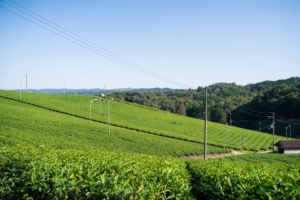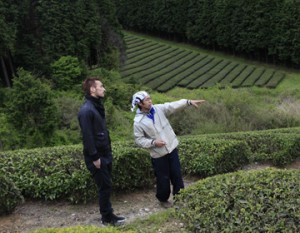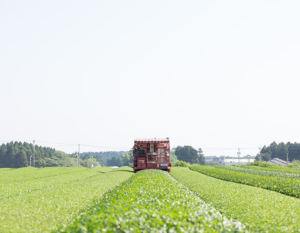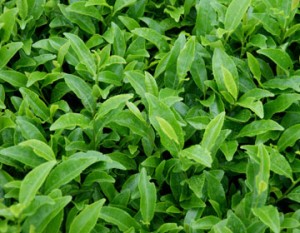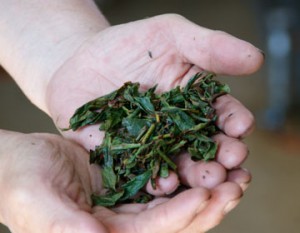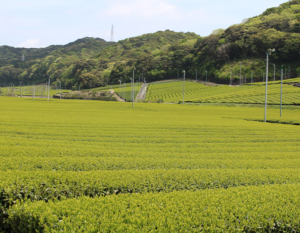Enjoying a quiet moment in an open air tearoom
Ureshino city in Saga is known for “Ureshino Tea”. It is said that tea cultivation started in this area during the Muromachi period when techniques came in from China. The entire area was surrounded with the fragrant aroma of tea leaves in early May when the harvest season begins. In most cases, the growers and wholesale producers are separate, but Soejimaen consolidates everything inhouse.
“The roots of Ureshino Tea is the steamed ‘tamarokucha’ also known as ‘guricha’ which looks like small balls (tama)”.
Thinking ahead about the future of tea cultivation in Ureshino, Hitoshi Soejima is the fourth generation and has continued to grow tea leaves using as little chemicals as possible. He has grown the business nationwide while overseeing everything from package design to sales.
“We downsized our fields from to shift to organic farming when my father ran the business. We also switched to direct sales to ensure quality and safety. Some popular ryokan have started serving our teas, and we’ve seen an increase in fans.”
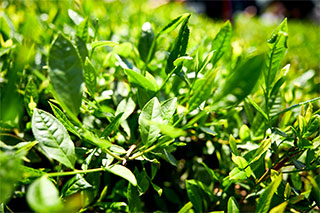
Tea house without a roof
“We walk among the tea fields where harvesting had just begun. Soejimaen fields are located on the side of a hill that overlooks the city of Ureshino. Our visit coincided with “hachiju hachiya”, the 88th day after the Lunar New Year, and it is said that drinking a cup of tea with leaves chosen on this day brings you good health. The entire Soejima family was out in the fields.
“We’ve started producing black tea as well as a way to protect the tea culture.”
Soejima leads us to an open air tearoom located in the middle of the highest field where we enjoy a cup of newly picked tea in the light breeze under blue skies. The first cup is a warm tea in a small vessel. It is deep and sweet with no distractions. The second cup is a cold tea prepared overnight. Served in a champagne flute, it has a fresh sweetness. The deep flavor and bright color are definitely quite different from the tea sold in plastic bottles.
“The flavor of tea varies greatly depending on the variety, how it’s produced and how it’s prepared. Yet, people don’t know much about it even though it should be more familiar than even sake. I want to expand my knowledge as well by studying more about it.”
Enjoying the most exquisite tea in the open air tearoom, Nakata has a new appreciation for the potential of Japanese green tea.





